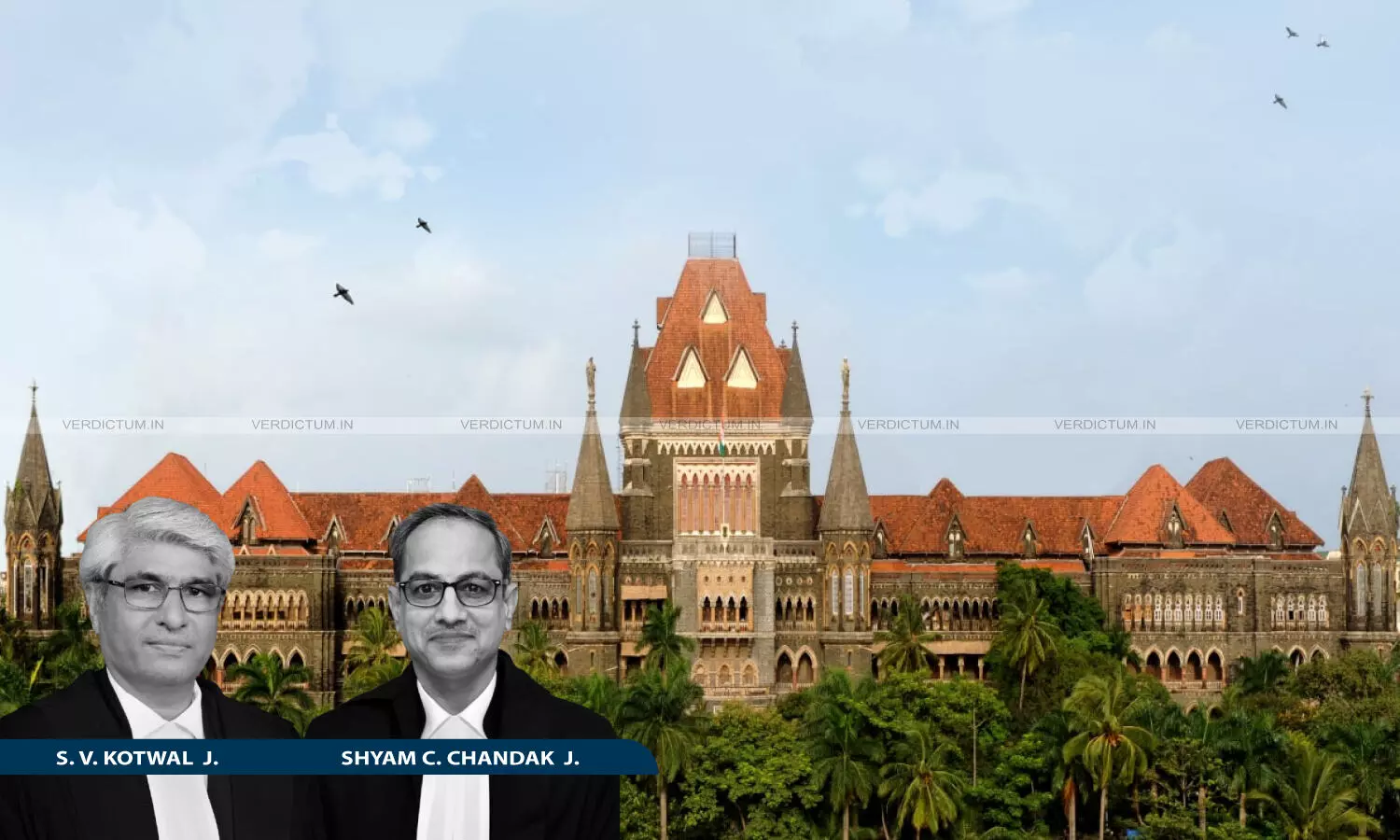
Justice Sarang V. Kotwal, Justice Shyam C. Chandak, Bombay High Court
No Possibility Of Any Other Hypothesis: Bombay High Court Upholds Conviction Of Man Accused Of Killing Girlfriend Inside School Classroom
 |
|The Bombay High Court said that the burden was on the accused to explain under what circumstances the deceased had suffered the injuries
The Bombay High Court has upheld the conviction of a man who was accused of killing his girlfriend by inflicting blows with a cutter on her throat inside the school classroom.
A Criminal Appeal was filed by the accused against the Judgment of the Additional Sessions Judge, by which he was convicted for the offence punishable under Section 302 of the Indian Penal Code, 1860 (IPC) and sentenced him to suffer rigorous imprisonment for life along with a fine of Rs. 5,000/-.
A Division Bench comprising Justice Sarang V. Kotwal and Justice Shyam C. Chandak observed, “The strong circumstance was that the Appellant and the deceased were lying next to each other. The cutter i.e. the murder weapon was also lying nearby. There was no other person who could have committed that offence. Therefore, there is no possibility of any other hypothesis but to accept that it was only the Appellant who could have committed this offence.”
The Bench was of the opinion that the prosecution has proved its case beyond a reasonable doubt.
Advocate Ramesh Dube Patil appeared on behalf of the Appellant/Accused while APP Kranti Hiwrale appeared on behalf of the Respondent/State.
Brief Facts
As per the prosecution case, the Appellant-accused was having a love relationship with the victim and they had even given a notice for registration of their marriage. The victim’s family came to know about this notice and they persuaded her to withdraw the same. They allegedly promised her that they would get her married with the accused once her elder sister’s marriage was performed. However, after the elder sister got married, the victim’s family did not take any steps in getting the accused and victim married. Allegedly, they both continued meeting each other. In May 2016, at night, they met in a classroom in a school. It was alleged that the accused inflicted blows with a cutter on her throat and also caused some injuries on her hands and other parts. Some boys in the vicinity heard the shouts and they reached there. They saw the scene and got frightened. They rushed outside the school and informed others.
It was further alleged that the victim’s mother was informed and she rushed to the spot. She saw that her daughter was lying in a pool of blood and the accused was lying nearby. The murder weapon i.e., the cutter was also at the spot and somebody informed the police. The victim had already died and the accused was taken to the hospital. The victim’s mother lodged an FIR and after the accused was discharged from the hospital, he was put under arrest. The accused took a defence that the victim herself told him that they have no other option but to commit suicide and hence, she had brought a cutter with her. He further stated that he took the cutter from her hand and inflicted blows on his wrist and neck and due to bleeding, he became unconscious and did not know what happened after that. The Trial Court convicted the accused and being aggrieved by the same, he approached the High Court.
Reasoning
The High Court in view of the facts and circumstances of the case, said, “Thus, from that chart itself it is quite clear that all those injuries are homicidal wounds. This fact is also supported by the evidence of PW-9 Rahul and PW-11 Ganesh who had heard the shouts and, therefore, they had reached to the spot. Therefore, it is quite clear that only after the Appellant started inflicting blows with the cutter on the victim, she had shouted thereby attracting the attention of PW-9 and PW-11. It is not in consonance with the theory of suicide by permitting the Appellant to assault with the weapon.”
The Court noted that the victim/deceased was an educated girl who had completed her MBA and the circumstances and evidence do not suggest that she had asked the accused to commit suicide together.
“In this case, the victim and the Appellant were together in a classroom in a school. Therefore, these are the only two persons who could have narrated about the incident. Out of them, the victim is dead and, therefore, it was within the exclusive knowledge of the Appellant as to what had happened”, it added.
The high court of Bombay further observed that the burden was on the accused to explain under what circumstances the deceased had suffered those injuries and Section 106 of the Indian Evidence Act, 1872 (IEA) lays down that when any fact is especially within the knowledge of any person, burden of proving that fact is upon him.
“In this case, the burden was on the Appellant to explain as to how all these injuries were caused to the deceased. To that extent, his defence is not acceptable. He had not explained as to how the deceased had suffered those injuries. His only defence was that, he inflicted injuries on himself and then he lost his consciousness. He does not utter a word as to how the deceased had suffered injuries. Therefore, this burden is not discharged by him”, it also said.
Accordingly, the High Court dismissed the Appeal and upheld the conviction.
Cause Title- Shashikant Shantaram Tavare v. The State of Maharashtra (Neutral Citation: 2025:BHC-AS:28140-DB)
Appearance:
Appellant: Advocates Ramesh Dube Patil, Sagar Kasar, Rishabh Tiwari, Chaitali Bhogle, and Iraa Dube Patil.
Respondent: APP Kranti T. Hiwrale